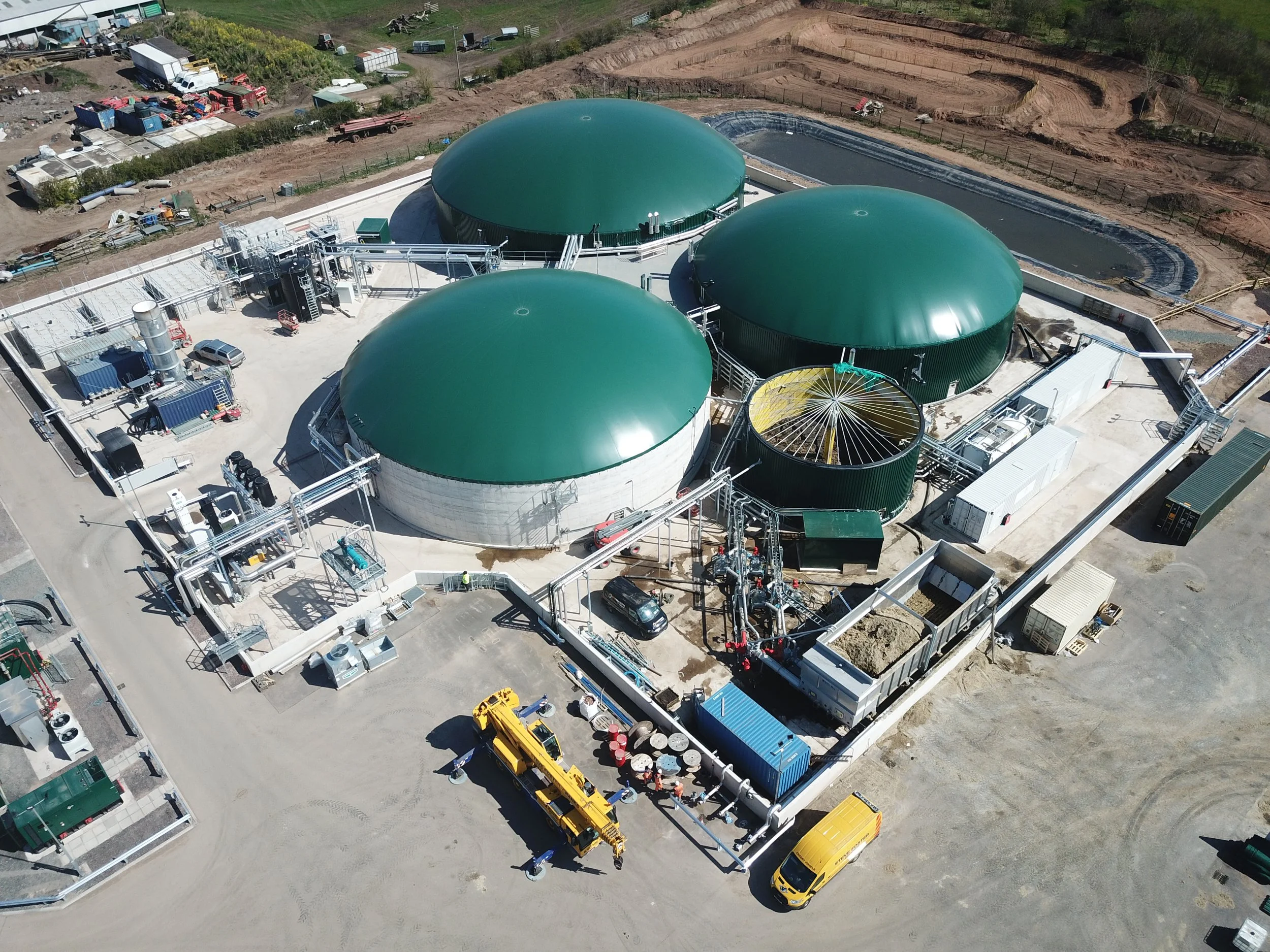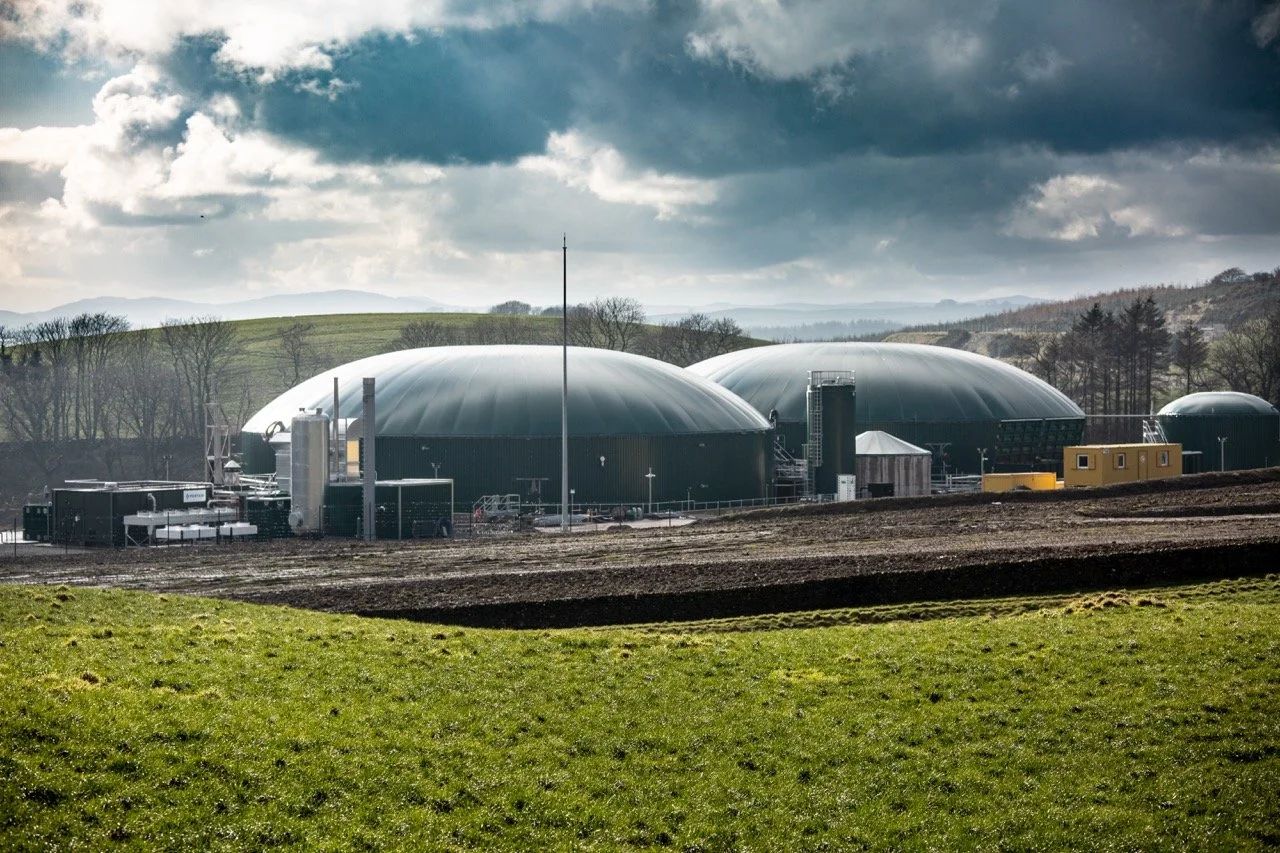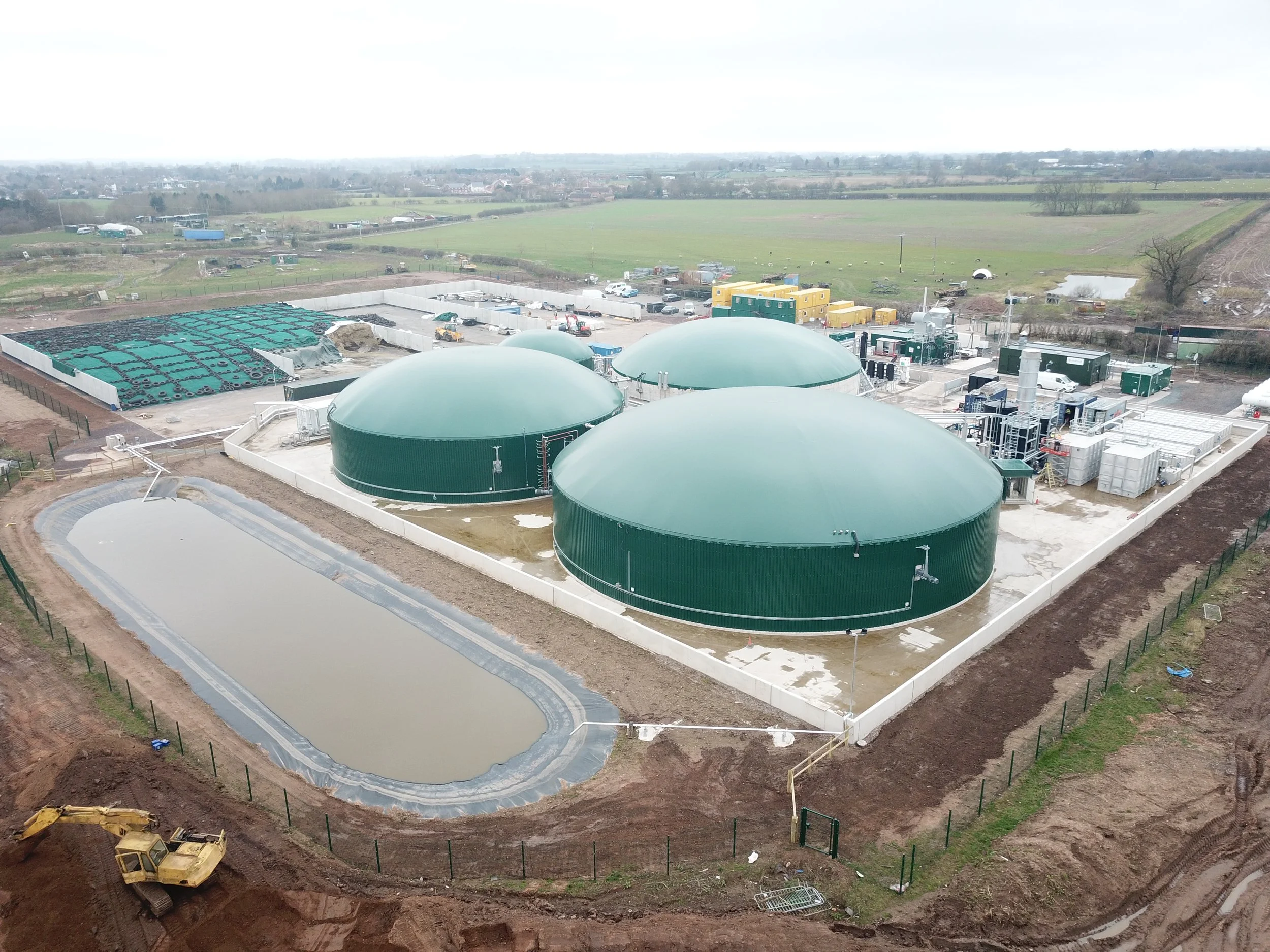What is Anaerobic Digestion?
Anaerobic digestion, often called AD, is a natural biological process where microorganisms break down organic material in the absence of oxygen. This controlled process takes place inside sealed, oxygen-free tanks known as digesters, creating two valuable outputs, renewable biogas and nutrient-rich digestate. AD is now a key technology within the UK’s circular economy, supporting energy security, reducing landfill dependency and helping businesses cut their environmental impact.
How Does Anaerobic Digestion Work?
Anaerobic digestion follows four main stages, each handled by different groups of microorganisms. Together they convert organic matter into methane-rich biogas.
Hydrolysis
Complex materials such as carbohydrates, proteins and fats are broken into simpler compounds, making them accessible to the next stages.
Acidogenesis
Microbes convert these simple compounds into organic acids, alcohols, hydrogen and carbon dioxide.
Acetogenesis
The organic acids produced earlier are transformed into acetic acid and additional hydrogen and carbon dioxide.
Methanogenesis
Specialist microbes turn acetic acid and hydrogen into methane. This last step creates biogas that can be used on-site or upgraded for the gas grid.
What Feedstock can be used?
AD plants can process a wide range of biodegradable materials. Feedstock choice affects gas yield, plant performance and regulatory requirements.
Common feedstocks include:
Food waste from households, retailers, hospitality and food processors
Agricultural residues such as slurry, manure, crop residues and silage
Industrial organic waste from breweries, dairies, distilleries and factories
Energy crops such as maize and rye (where permitted and economically viable)
Sewage sludge, typically processed in wastewater treatment works
What is produced
Biogas - Typically around half or more methane by volume. with most of the remainder as carbon dioxide. Biogas fuels CHP for on-site electricity and heat. or is upgraded to biomethane for use in the gas grid or as vehicle fuel.
Digestate - The liquid and fibre by-product used as a biofertiliser when it meets quality and hygiene requirements such as PAS 110 for source-segregated biowaste.
Get in touch
Supporting AD projects across the UK and Europe
BIOCON Group works with clients across all feedstock types and advises on suitability, pre treatment requirements and optimisation strategies.
What Is Digestate?
Digestate is the nutrient-rich organic material remaining after digestion. It contains valuable plant nutrients such as nitrogen, phosphorus and potassium. When managed correctly, digestate is an effective organic fertiliser that can replace synthetic fertilisers and improve soil health.
Digestate is often separated into two fractions:
Liquid fraction for spreading through umbilical systems or tankers
Fibre fraction for composting, bedding or soil conditioning
Some sites choose to certify digestate to the PAS 110 standard, ensuring consistent quality and compliance for agricultural use.
Where Anaerobic Digestion Is Used
AD is a versatile technology used across sectors.
Agriculture for slurry management, energy production and nutrient recycling
Waste management for treating food and organic waste
Water industry for sludge digestion and renewable energy
Industrial and commercial sites seeking low carbon energy solutions
FAQ’s
-
Anaerobic digestion is a controlled biological process that breaks down organic materials in the absence of oxygen. It produces biogas for renewable energy and digestate for use as a biofertiliser.
-
Microbes convert complex organics into simpler compounds through staged biology. The result is biogas, mainly methane and carbon dioxide, and a nutrient-rich digestate.
-
Typical feedstocks include household and commercial food waste, manures and slurries, food and drink by-products, crop residues and energy crops where permitted. The feedstock must meet the plant’s specification and contamination limits.
-
Biogas for electricity and heat via CHP or upgrading to biomethane for gas-to-grid and transport. Digestate in liquid and fibre fractions for agronomic use when quality standards are met.
-
Biogas is the raw gas from the digester. After upgrading to remove carbon dioxide and trace impurities, it becomes biomethane suitable for grid injection and vehicle fuel.
-
Feedstock assessment, contamination risks, mass-energy balances, technology and site options, grid and heat offtake routes, permitting, capex-opex estimates and commercial scenarios.
-
Suitability depends on reliable feedstock supply, planning and permitting constraints, energy or gas offtake options, land for digestate use and the business case. A structured feasibility assessment will clarify options.
Connect with us
Let’s power the future. Together.
If you are exploring a new project, planning an upgrade or need support with operations, compliance or optimisation, BIOCON Group is here to help.
Our team brings decades of experience across agricultural, commercial and industrial AD. Contact us today to discuss your project.







